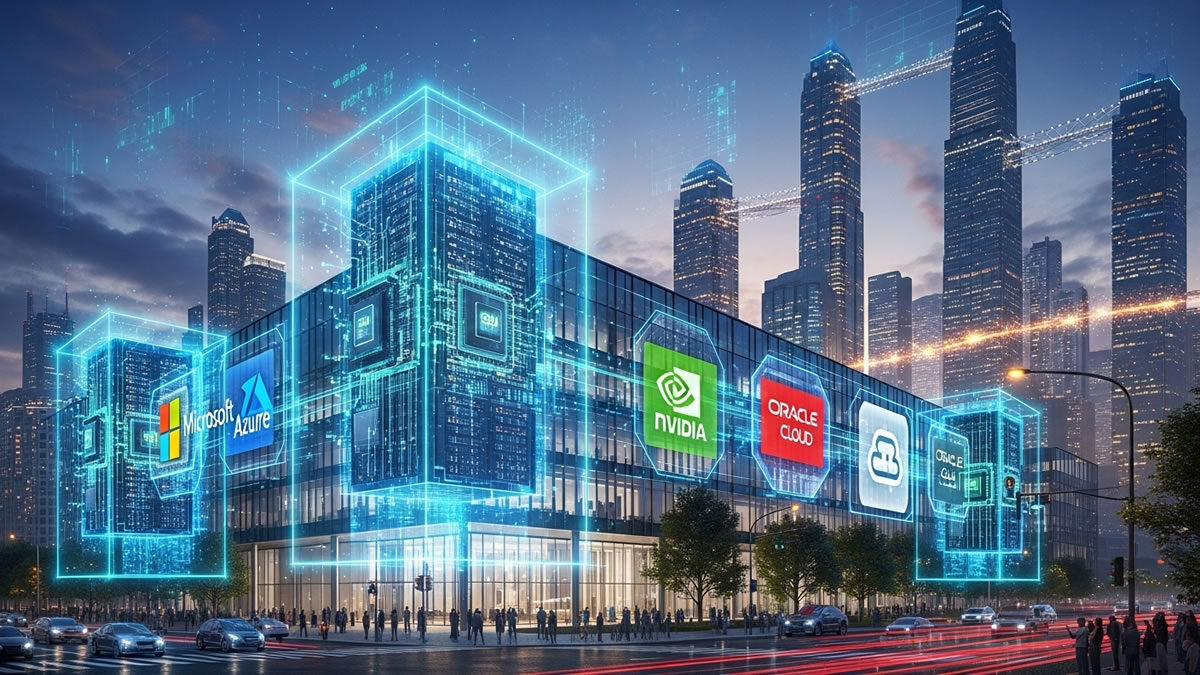OpenAI Requires Enormous Computing Capability to operate AI Systems, and as the technology world hastens to harness the potential of AI frameworks. There is a simultaneous competition occurring to establish the infrastructure that will support them.
Stay up to date with the latest technology in TheTechCrunch, which covers artificial intelligence, mobile and web apps, modern things, cyber security, and general technical news. From AI’s successes to chat and generative tools, such as smartphones, laptops, and wearables’ special reviews, TheTechCrunch gives an insight into this case.
During a recent earnings report, Nvidia CEO Jensen Huang predicted that between three trillion and four trillion dollars will be invested in AI infrastructure before the decade ends. With a large portion of that funding arriving from AI enterprises. Meanwhile, they are putting tremendous pressure on energy networks and stretching the industry’s building capacity to the maximum.
Major AI Infrastructure Projects
Below is everything currently known about the most significant AI infrastructure initiatives. Including major spending from Meta, Oracle, Microsoft, Google, and OpenAI. This information will continue to be refreshed as the boom proceeds and the figures grow even greater.
Microsoft And OpenAI’s Foundational Deal
This is perhaps the agreement that initiated the modern AI expansion. In 2019, Microsoft made a one-billion-dollar investment in a well-known nonprofit called OpenAI. Mainly recognized for its link with Elon Musk. Importantly, the partnership made Microsoft the exclusive cloud supplier for OpenAI. And as the necessities of model training intensified. More of Microsoft’s contribution began to appear in Azure cloud credits rather than currency.
It was an excellent arrangement for both organizations. Microsoft could record higher Azure revenue, and OpenAI obtained more capital for its most significant cost. In subsequent years, Microsoft expanded its investment to nearly fourteen billion dollars. A decision expected to deliver vast rewards when OpenAI converts into a profit-seeking enterprise.
Shifting Partnerships And Cloud Expansion
The collaboration between the two entities has changed recently. In January, OpenAI declared it would no longer utilize Microsoft’s cloud solely. Instead giving the company a primary right to future infrastructure requirements, but looking elsewhere if Azure could not fulfill them. More recently, Microsoft started examining additional foundation models to support its AI services, creating further separation from OpenAI.
OpenAI’s connection with Microsoft became so successful that it set a standard for AI firms to partner with a particular cloud provider. Anthropic received eight billion in funding from Amazon while modifying the company’s hardware to better support AI development. Google Cloud also partnered with smaller AI firms like Lovable and Windsurf as primary computing collaborators, though those arrangements did not involve capital investment. OpenAI later secured a one-hundred-billion-dollar investment from Nvidia in September, enabling it to acquire even more GPUs.
Oracle’s Massive Cloud Deals
On June 30, 2025, Oracle disclosed in a financial report that it had signed a thirty-billion-dollar cloud services agreement with an unidentified associate, exceeding the company’s total cloud income from the prior fiscal year. OpenAI was later identified as the partner, granting Oracle a place beside Google as one of OpenAI’s post-Microsoft hosting providers. Predictably, Oracle’s share price skyrocketed.
A few months afterward, it happened again. On September 10, Oracle revealed a five-year, three-hundred-billion-dollar contract for computing resources, beginning in 2027. The company’s stock climbed higher, briefly making founder Larry Ellison the wealthiest individual globally. The magnitude of the arrangement is astonishing; OpenAI does not possess three hundred billion to expend, so the figure anticipates vast growth for both organizations and substantial optimism.
Before even one dollar is expended, the contract has already positioned Oracle as a dominant AI infrastructure supplier and a financial powerhouse.
Nvidia’s Strategic Investments
As AI developers rush to establish infrastructure, they are largely acquiring GPUs from one provider — Nvidia. That trade has made Nvidia immensely profitable, and it has been channeling those profits back into the industry in creative ways. In September 2025, the company acquired a four percent stake in Intel for five billion dollars, but even more remarkable were its deals with clients.
One week after announcing the Intel acquisition, Nvidia confirmed a one-hundred-billion-dollar investment in OpenAI, funded with GPUs used in OpenAI’s continuing data center expansion. Nvidia has since created a comparable deal with Elon Musk’s xAI, and OpenAI launched another GPU-for-stock exchange with AMD.
If this seems cyclical, it truly is. Nvidia’s GPUs are precious due to their scarcity, and by directly exchanging them in an expanding data center market, Nvidia ensures they remain in high demand. The same applies to OpenAI’s privately owned equity, which gains value since it cannot be accessed through public trading. For now, Nvidia and OpenAI are thriving, and few appear concerned, but if momentum slows, such arrangements will receive closer examination.
Meta’s Massive Buildout
For companies like Meta that already own substantial existing infrastructure, the situation is more complex, yet equally expensive. Mark Zuckerberg mentioned that Meta intends to invest six hundred billion dollars in American infrastructure by 2028.
In the first half of 2025, the company spent thirty billion more than the previous year, largely due to expanding AI ambitions. Some of this spending targets cloud contracts, including a recent ten-billion-dollar deal with Google Cloud, while additional resources are directed toward constructing two enormous new data centers.
One 2,250-acre facility in Louisiana, called Hyperion, will cost around ten billion dollars and deliver roughly five gigawatts of computing capability. The site includes a partnership with a nearby nuclear power facility to manage the greater energy needs. Another smaller center in Ohio, named Prometheus, is scheduled to launch in 2026, powered by natural gas.
Environmental And Political Impact
Such extensive development comes with environmental consequences. Elon Musk’s xAI constructed its hybrid data center and power generation facility in South Memphis, Tennessee. The site rapidly became one of the region’s largest emitters of pollution-producing chemicals because of multiple gas turbines that, according to experts, breach the Clean Air Act.
Just two days after his second inauguration, President Trump announced a collaboration among SoftBank, OpenAI, and Oracle to invest five hundred billion dollars in creating AI infrastructure across the United States. Named Stargate after the 1994 film, the project launched with extraordinary anticipation, with Trump calling it the largest AI infrastructure initiative ever. Sam Altman shared the sentiment, stating that he believed it would be the most important undertaking of this era.
Generally, the plan called for SoftBank to supply financing while Oracle handled construction with advice from OpenAI. Overseeing it was Trump, who promised to remove regulatory barriers that might cause delays. Yet doubts quickly surfaced, especially from Elon Musk, who argued the project lacked sufficient capital.
As excitement has faded, progress has slowed. In August, Bloomberg reported internal disagreements among partners. Nevertheless, work continues on eight data centers in Abilene, Texas, with completion of the final building projected by the end of 2026.
Explore a complete hub for the latest apps, smart things, and security updates online, ranging from AI-operated solutions and automation tools. TheTechCrunch offers in-depth articles, comparisons, and specialist analysis designed to understand the rapidly changing technology. Whether you are keen on robotics, data protection, or the latest digital trends.


